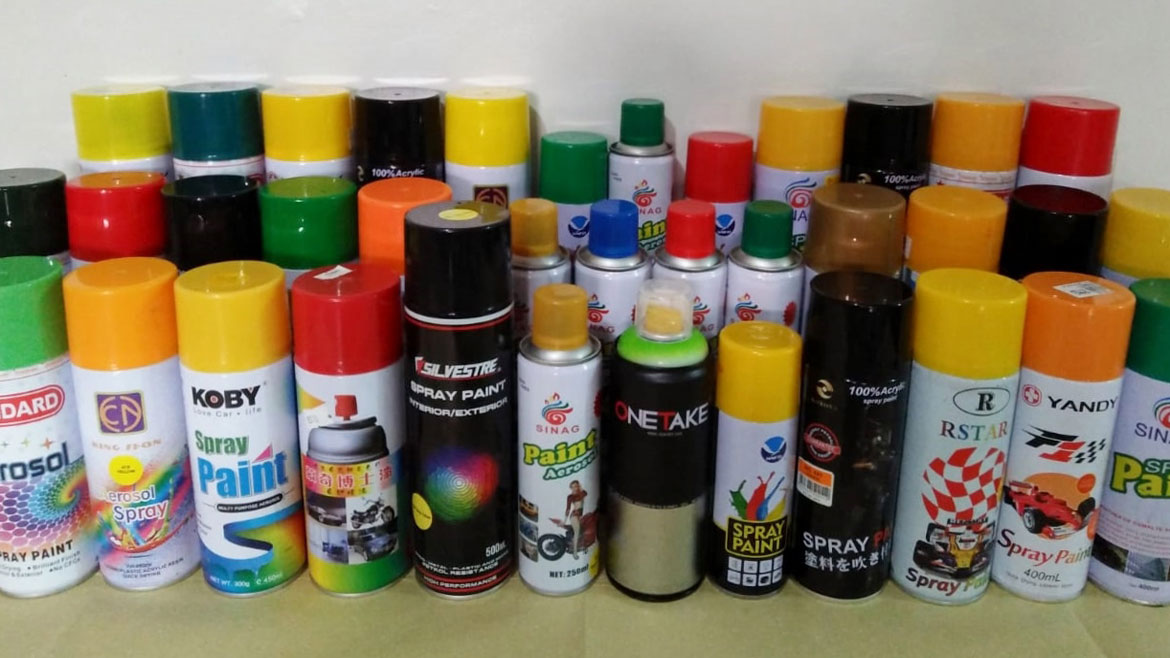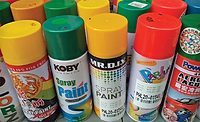Philippine NGO Finds Excessive Lead Levels in Imported Spray Paints

Photo courtesy of EcoWaste Coalition.
QUEZON CITY, Philippines – According to the watchdog group EcoWaste Coalition, paint products in aerosol cans containing significant levels of lead are still offered for sale by offline and online retailers in the Philippines despite the ban on such paints. The group made this revelation as the Chemical Control Order (CCO) phasing out lead in all paint categories in the country marked its eight anniversary.
“We find it very disappointing to find more lead-containing spray paints being sold at retail stores and online shopping sites in violation of the CCO. These decorative paints, which are marketed for general use and are accessible to consumers, should have been phased out on December 31, 2016,” said Thony Dizon, Chemical Safety Campaigner, EcoWaste Coalition.
Put into effect in 2013, the CCO issued by the Philippines Department of Environment and Natural Resources (DENR) stipulates a maximum limit of 90 parts per million (ppm) for lead in paint, and set a three-year period (2013-2016) to phase-out leaded decorative paints and a longer six-year period (2013-2019) for leaded industrial paints. Both the EcoWaste Coalition and the International Pollutants Elimination Network (IPEN) contributed to the development of the CCO. These organizations have been conducting lead paint studies and providing public information and policy advocacy activities in pursuit of the country’s shift to non-lead paint production backed by the Philippine Association of Paint Manufacturers (PAPM).
For its latest lead paint investigation, the EcoWaste Coalition in October and November 2021 procured a total of 60 spray paints representing 16 brands that were obtained from online dealers and from various retail stores in 11 cities in the Philippines, including Angeles, Antipolo, Batangas, Calamba, Lucena, Mabalacat, Malolos, Manila, Paranaque, San Fernando, and San Jose del Monte. The samples were mostly imported from China and Thailand.
The sampled products are often labeled as ideal for almost all types of surfaces and painting applications and can be used to touch up scratches or spruce up metal items, as well as a material for school projects. The samples were initially screened for lead through a handheld X-Ray Fluorescence (XRF) analyzer. The 37 samples that exceeded the 90 ppm limit were subsequently submitted to SGS, a private testing company, for a total lead content analysis performed by inductively coupled plasma — optical emission spectrometry (ICP-OES).
Laboratory test results confirmed that the 37 samples — representing 11 brands — contained lead concentrations up to 97,100 ppm. Of the 37 samples, 30 had extremely high lead concentrations in excess of 10,000 ppm, and of these 30 samples, 23 had lead above 40,000 ppm. The remaining seven samples had lead levels between 428 to 4,850 ppm. None of these leaded paints were manufactured by PAPM-affiliated companies.
“Products labeled as ‘lead free’ when they are not give consumers a false assurance about a product’s lead content. This case of mislabeling points to the importance of third-party certification that will independently confirm compliance to the 90 ppm lead in paint standard,” the groups insisted.
Aside from proposing immediate regulatory action, the EcoWaste Coalition reminded consumers to refrain from buying inadequately labeled and uncertified paint products, while urging manufacturers, including those that export paints to the Philippines, to obtain third-party Lead Safe Paint® certification to help consumers in picking paints without lead in excess of the 90 ppm limit.
Looking for a reprint of this article?
From high-res PDFs to custom plaques, order your copy today!








